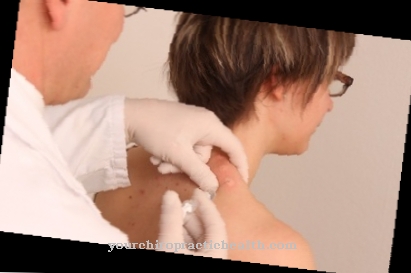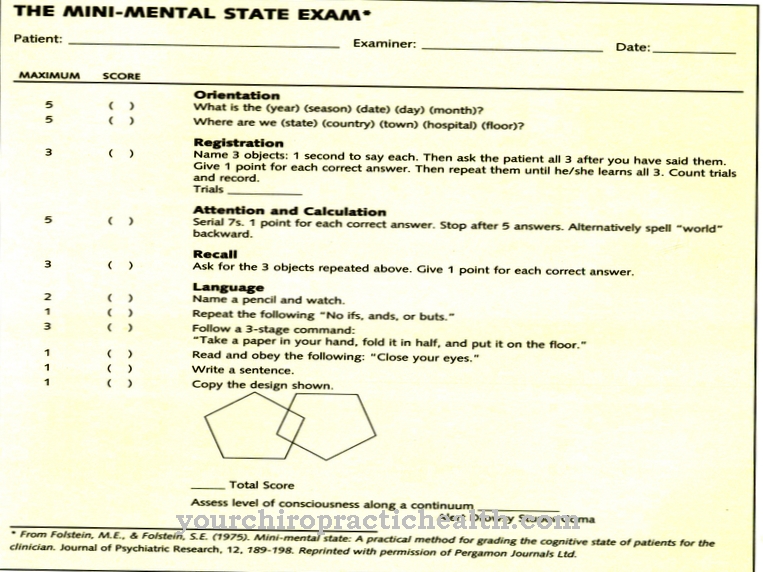The sports medicine is a very special medical specialty that is only interesting or relevant for a certain part of the population. In a nutshell, one could say: what the gynecologist is for the female population, the sports medicine doctor is for the professional athletes (and the small part of the amateur athletes who can afford it). There are a whole host of sport-specific illnesses and complaints with which the athlete would prefer to put himself in the hands of an expert in case of doubt. At the same time, however, sports medicine also deals with theory on a large scale.
What is sports medicine?

You could say: sports medicine deals with medical issues relating to exercise and sport. It is therefore not only related to the diagnosis or organs like other disciplines, but also examines the importance of physical activity (or passivity) for health and performance.
In Germany, sports medicine is not only a multi-year specialist training course, but an interdisciplinary additional designation acquired in a course: The sports medicine specialist is thus in most cases primarily an internist or orthopedic surgeon and sports medicine is acquired as a further specialization Qualification.
Treatments & therapies
In addition to research into diseases that have to do with a lack of exercise or the exercise of sports, there are many specific clinical pictures that can lead a patient to a sports doctor.
These patients are of course the entire spectrum of professional athletes, to whom sports medicine doctors are usually made available directly as association or team doctors. Furthermore, sports medicine can also be of interest to amateur athletes if they suffer from very specific sports-related complaints or can and want to afford prophylactic measures such as a lactate test or individual training advice.
Typical athlete's illnesses are orthopedic skeletal complaints such as tennis elbow, its counterpart the golfer's elbow, the runner's or footballer's knee, the skier's thumb, the boxer's nose or the ringer's ears. Fatigue fractures due to permanent unilateral loads or signs of wear and tear on joints, such as in osteoarthritis, can also fall within the scope of sports medicine if they occur in connection with physical activity.
Sports-related complaints from other medical fields, such as Chronic fatigue due to overtraining, heart problems due to too much training or insufficient training, runner anemia or march hemoglobinuria and many more can lead to an appointment with a sports doctor. What is special about all of these diseases is that they can in principle also be treated by a different specialty, usually with priority: the tennis elbow from the orthopedic surgeon, the marching fracture from the trauma surgeon, the heart problems from the cardiologist and so on.
However, since surgeons and internists deal with older patients in the majority of cases in this country and have correspondingly little routine with young athletes and often insufficient understanding of sport, many athletes with their complaints sooner or later prefer to see a sports doctor. Thus, the "treatment of man" is more different here than the "treatment of illness".
In addition, the unique selling point of sports medicine is the entire area of prophylaxis and training advice: getting rid of unhealthy postures and movement sequences, tips and aids to avoid the recurrence of sports injuries, drawing up training plans, monitoring form structure and so on. Here, in turn, the sports medicine specialists overlap with the non-medical sports scientists.
Diagnosis & examination methods
Diagnostic and examination procedures of the sports medicine are initially the same as in internal medicine and surgery: using blood values such as hemoglobin, the development of anemia due to exercise can be recognized, the electrolyte values indicate an unfavorable fluid balance, the X-ray shows fractures or incorrect posture and this special field often becomes quick very special imaging diagnostics such as CT and MRI necessary.
The anamnesis is of course, as in medicine as a whole, the decisive guide to possible causes of complaints and to possible or necessary further diagnostics. That means in plain language: In the best case scenario, the sports doctor really knows about sport and the associated, sometimes very special and also rare, complaints and can therefore describe them very precisely in order to come to possible diagnoses that the family doctor undergoes Last heard something while studying.
In the area of research, training advice and prophylaxis, fitness items such as the treadmill or the bicycle ergometer play a major role, with the help of which athletic stress can be "simulated" at an adequate level. Under "laboratory conditions", circulatory parameters such as pulse and blood pressure, but also invasive blood value measurements such as those of the lactate value, can be carried out, with the help of which the individual physical performance can be well determined and monitored during the training.













.jpg)

.jpg)
.jpg)











.jpg)